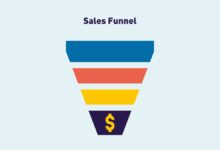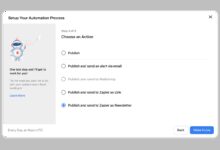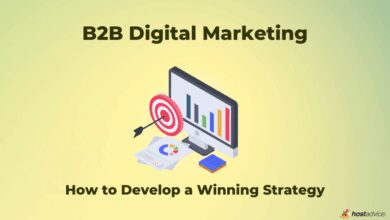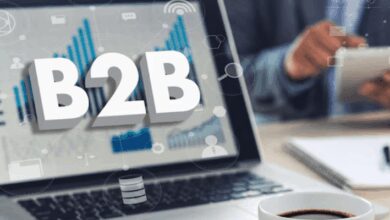B2B Campaign Tracking: 7 Powerful Strategies to Skyrocket ROI
Ever launched a B2B campaign and wondered where it actually went? With complex sales cycles and multiple decision-makers, tracking success isn’t just helpful—it’s essential. That’s where smart B2B campaign tracking comes in, turning guesswork into growth.
Why B2B Campaign Tracking Is a Game-Changer

In the world of business-to-business marketing, results aren’t always immediate. Unlike B2C, where a single ad might drive instant purchases, B2B decisions involve research, approvals, and long nurturing periods. This complexity makes tracking every touchpoint not just useful—but critical for survival in competitive markets.
Understanding the B2B Buyer’s Journey
The B2B buyer’s journey is rarely linear. It typically includes awareness, consideration, and decision stages, each influenced by different content types and channels. Without proper b2b campaign tracking, marketers can’t determine which stage a lead is in or what content moved them forward.
- Awareness: Prospects realize they have a problem.
- Consideration: They evaluate potential solutions.
- Decision: They choose a vendor.
Tracking allows you to map interactions across these stages, ensuring your messaging aligns with the buyer’s evolving needs. For example, someone downloading an eBook might be in awareness, while a demo request signals decision-stage intent.
“If you can’t measure it, you can’t improve it.” – Peter Drucker
The High Cost of Poor Tracking
Ignoring b2b campaign tracking leads to wasted budgets and missed opportunities. According to a report by Gartner, companies that fail to track campaign performance accurately waste up to 26% of their marketing spend.
- Unclear ROI: You can’t prove which campaigns drive revenue.
- Ineffective targeting: Messaging doesn’t resonate because you lack behavioral insights.
- Poor sales alignment: Sales teams receive unqualified leads due to missing engagement data.
Without tracking, your marketing becomes a series of isolated efforts rather than a cohesive strategy. This disconnect often results in friction between marketing and sales—a common pain point in B2B organizations.
Key Metrics to Monitor in B2B Campaign Tracking
Not all metrics are created equal. In b2b campaign tracking, focus on indicators that reflect real business impact, not just vanity numbers like page views or likes.
Lead Conversion Rate
This measures how many prospects become qualified leads after engaging with your campaign. A high conversion rate indicates effective messaging and targeting.
- Formula: (Number of Qualified Leads / Total Campaign Interactions) × 100
- Benchmark: Top-performing B2B campaigns achieve 5–10% conversion rates.
Tools like HubSpot and Marketo automate this tracking by scoring leads based on behavior and demographics.
Cost Per Lead (CPL)
CPL reveals how much you’re spending to acquire each lead. It’s crucial for budget allocation and campaign optimization.
- Formula: Total Campaign Spend / Number of Leads Generated
- Insight: A low CPL doesn’t always mean success—if leads aren’t converting downstream, the cost is still high.
For instance, a LinkedIn ad campaign might generate leads at $50 CPL, while a webinar costs $120 per lead. However, if the webinar leads have a 40% sales conversion rate versus 10% for LinkedIn, the higher CPL is justified.
Customer Acquisition Cost (CAC)
CAC goes beyond leads to measure how much it costs to close a paying customer. It’s one of the most important KPIs in b2b campaign tracking.
- Formula: Total Marketing & Sales Spend / Number of Customers Acquired
- Rule of Thumb: CAC should be less than 1/3 of Customer Lifetime Value (LTV).
According to CB Insights, SaaS companies with a CAC payback period under 12 months grow 2.5x faster than those with longer payback times.
Essential Tools for Effective B2B Campaign Tracking
Manual tracking is outdated and error-prone. Modern b2b campaign tracking relies on integrated platforms that capture data across channels and touchpoints.
Marketing Automation Platforms
Platforms like Marketo, HubSpot, and Pardot are central to tracking multi-touch campaigns.
- Automate lead scoring based on engagement (e.g., email opens, content downloads).
- Track lead progression through the funnel.
- Sync data with CRM systems like Salesforce.
For example, if a lead attends a webinar, downloads a case study, and visits pricing pages, the system can flag them as sales-ready—enabling timely follow-up.
Customer Relationship Management (CRM) Systems
CRMs are the backbone of b2b campaign tracking. They store contact history, track interactions, and link marketing efforts to sales outcomes.
- Salesforce, Microsoft Dynamics, and Zoho CRM offer deep campaign tracking modules.
- They allow you to attribute closed deals to specific campaigns, channels, or even individual ads.
Integration with marketing tools ensures that every lead’s journey—from first click to contract signing—is recorded and analyzable.
“Data is the new oil, but only if it’s refined.” – Clive Humby
UTM Parameters and URL Tracking
UTM (Urchin Tracking Module) parameters are simple tags added to URLs to identify traffic sources in Google Analytics.
- Example:
yourwebsite.com/demo?utm_source=linkedin&utm_medium=social&utm_campaign=Q3_webinar - Enables granular tracking of campaign performance by source, medium, and content.
When combined with Google Analytics 4 (GA4), UTM tags provide insights into user behavior, session duration, and conversion paths. This level of detail is indispensable for optimizing future campaigns.
Multi-Touch Attribution Models in B2B Campaign Tracking
Most B2B purchases result from multiple interactions across various channels. Multi-touch attribution assigns credit to each touchpoint, offering a more accurate view of campaign effectiveness.
First-Touch vs. Last-Touch Attribution
These are the simplest models but often misleading in B2B contexts.
- First-touch: Credits the first interaction (e.g., a Google search).
- Last-touch: Credits the final interaction before conversion (e.g., a demo request form).
While easy to implement, they ignore the influence of middle-funnel activities like email nurturing or content engagement—critical in long B2B cycles.
Linear Attribution
This model gives equal credit to every touchpoint in the customer journey.
- Example: If a lead interacted with 5 touchpoints, each gets 20% credit.
- Advantage: Recognizes the value of consistent nurturing.
- Limitation: Doesn’t account for more impactful interactions (e.g., a product demo).
Linear attribution is a step forward from single-touch models but still lacks sophistication for complex B2B sales.
Time-Decay and Position-Based Models
These models offer more nuance:
- Time-decay: Assigns more credit to touchpoints closer to conversion.
- Position-based (U-shaped): Gives 40% credit to first and last touchpoints, 20% to middle interactions.
For B2B companies, position-based models often work best because they acknowledge both initial awareness and final decision-making efforts.
Platforms like Google Analytics 4 and AdRoll support these models, enabling marketers to see how different campaigns contribute across the funnel.
Integrating Sales and Marketing Data for Holistic B2B Campaign Tracking
One of the biggest challenges in b2b campaign tracking is the silo between marketing and sales. Without alignment, tracking remains fragmented and incomplete.
Shared Goals and KPIs
Marketing and sales teams must agree on definitions and objectives.
- Define what constitutes a “Marketing Qualified Lead” (MQL) vs. a “Sales Qualified Lead” (SQL).
- Align on conversion timelines and follow-up processes.
When both teams use the same criteria, tracking becomes consistent, and accountability improves.
CRM-Marketing Platform Integration
Syncing CRM and marketing automation tools ensures data flows seamlessly.
- Every lead interaction is recorded in one system.
- Sales reps see full engagement history before calling a prospect.
- Marketers get feedback on lead quality and conversion rates.
For example, if a lead opens three emails, visits the pricing page twice, and attends a webinar, the sales team can personalize their outreach based on that behavior—increasing close rates.
Regular Feedback Loops
Monthly or quarterly reviews between marketing and sales help refine tracking and strategy.
- Discuss which campaigns generated the best leads.
- Identify gaps in messaging or targeting.
- Adjust attribution models based on real-world outcomes.
These meetings foster collaboration and ensure that b2b campaign tracking isn’t just a technical exercise but a strategic driver of growth.
Overcoming Common Challenges in B2B Campaign Tracking
Even with the right tools, companies face obstacles in implementing effective b2b campaign tracking.
Data Silos and Fragmentation
When data lives in separate systems—email, social, CRM, website—it’s hard to get a unified view.
- Solution: Use integration platforms like Zapier or Workato to connect tools.
- Invest in a Customer Data Platform (CDP) like Segment or Tealium for centralized data management.
A unified data layer enables accurate attribution and personalized experiences at scale.
Long Sales Cycles and Lagging Metrics
B2B sales can take 6–12 months, making it hard to link campaigns to revenue in real time.
- Solution: Track leading indicators like engagement score, content consumption, and sales activity.
- Use predictive analytics to forecast which leads are most likely to convert.
For example, AI-powered tools like 6sense analyze behavioral data to predict intent, helping marketers focus on high-potential accounts.
Lack of Internal Expertise
Many teams lack the skills to set up and interpret tracking systems.
- Solution: Invest in training or hire specialists in marketing analytics.
- Leverage vendor support—most platforms offer onboarding and consulting services.
Building internal capability ensures sustainability and reduces dependency on external agencies.
Future Trends in B2B Campaign Tracking
The landscape of b2b campaign tracking is evolving rapidly due to technological advancements and changing buyer behavior.
AI-Powered Predictive Analytics
Artificial intelligence is transforming how marketers track and predict campaign success.
- AI analyzes vast datasets to identify patterns and predict lead behavior.
- Tools like Salesforce Einstein and HubSpot AI offer predictive lead scoring and content recommendations.
These capabilities allow marketers to proactively adjust campaigns before results decline.
Account-Based Marketing (ABM) Integration
ABM focuses on targeting high-value accounts rather than individual leads.
- Tracking shifts from lead-centric to account-centric metrics.
- Success is measured by engagement across multiple stakeholders within a target account.
Platforms like Terminus and Demandbase enable precise tracking of account-level engagement, making b2b campaign tracking more strategic and revenue-focused.
Privacy-First Tracking Solutions
With increasing regulations (GDPR, CCPA) and browser restrictions (e.g., third-party cookie deprecation), traditional tracking methods are under threat.
- Solution: Shift to first-party data collection and consent-based tracking.
- Use server-side tracking and identity resolution platforms to maintain accuracy.
Companies that adapt early will maintain visibility into customer journeys without compromising compliance.
What is B2B campaign tracking?
B2B campaign tracking is the process of monitoring and analyzing marketing efforts aimed at other businesses. It involves measuring key metrics like lead conversion, cost per lead, and customer acquisition cost to evaluate performance and optimize future campaigns.
Why is multi-touch attribution important in B2B?
Because B2B buying decisions involve multiple touchpoints and stakeholders, multi-touch attribution provides a more accurate picture of which marketing activities contribute to conversions, helping allocate budgets more effectively.
How do I integrate marketing and sales data for better tracking?
Use integrated platforms like HubSpot or Salesforce, define shared KPIs, and establish regular feedback loops between teams to ensure alignment and data consistency.
What tools are best for B2B campaign tracking?
Top tools include marketing automation platforms (HubSpot, Marketo), CRM systems (Salesforce), analytics tools (Google Analytics 4), and ABM platforms (Demandbase, Terminus).
How can AI improve B2B campaign tracking?
AI enhances tracking by predicting lead behavior, automating data analysis, and providing real-time insights, enabling marketers to make faster, data-driven decisions.
Effective b2b campaign tracking is no longer optional—it’s the foundation of modern B2B marketing. From understanding the buyer’s journey to leveraging AI and ABM, the ability to measure, analyze, and optimize every interaction separates high-performing teams from the rest. By investing in the right tools, aligning sales and marketing, and embracing future trends, businesses can turn their campaigns into predictable revenue engines. The future of B2B marketing isn’t just about creating great content—it’s about knowing exactly what works and why.
Further Reading:









